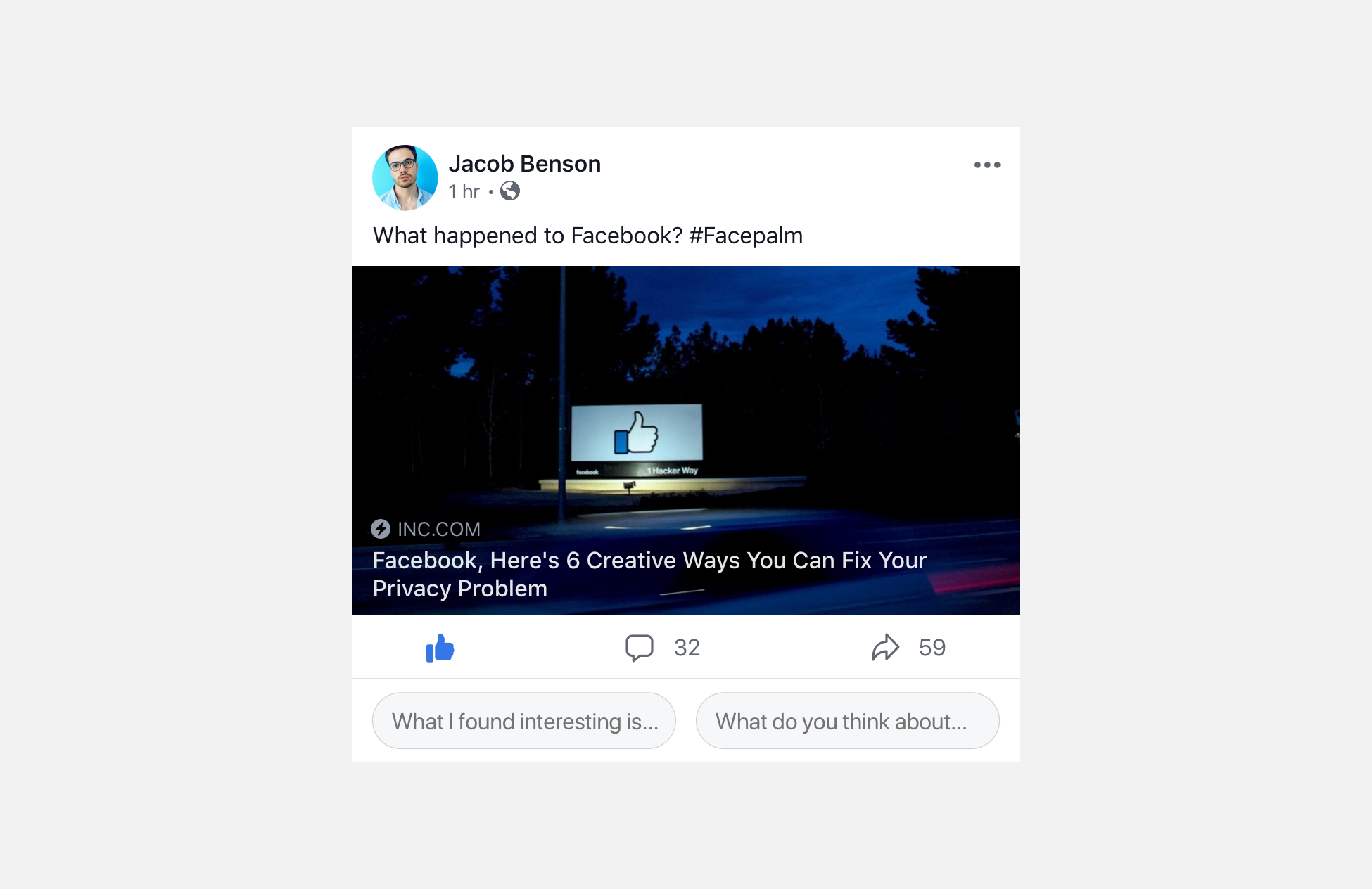But while the conversation around your data online should remain as the focus, perhaps this is an opportunity to examine the broader, more systemic issues that the social media platform has on your life.
Facebook’s Bigger Problem: Well-Being
Zuckerberg, in his opening statement to congress earlier this week, admitted that Facebook has accepted the responsibility for the role it plays in your life. Here’s what he said:
“So now we have to go through every part of our relationship with people and make sure we’re taking a broad enough view of our responsibility. It’s not enough to just connect people, we have to make sure those connections are positive.”
But if Facebook really believes it has a responsibility to make your connections more positive, then it needs to design an experience that facilitates true human interactions.
And that’s just not the case right now.
Just Scrolling Through Your Newsfeed is Unhealthy
Research shows that if you’re not using Facebook to interact with people you care about, just like in real life, then it’s bad for your emotional state and overall well-being.
According to the research, you’re more likely to feel unhappy when watching your friends post from the sidelines — reading posts but not commenting or messaging.
On the other hand, however, sharing messages, posts and comments with close friends has the opposite affect: it actually improves your well-being. This ability to interact with relatives, classmates, and colleagues can bring joy and satisfaction and strengthens your sense of community.
It’s certainly a useful insight; something to be mindful of next time you find yourself in the time-suck of your bottomless social feed.
But rather than having to constantly remind yourself of this, what if the experience was designed to encourage you to be more active with your close network? What would that look like?
Redesigning the “Like” Experience
Here’s the science behind a healthier Facebook experience: active engagement (i.e. commenting, messaging and sharing) increases the perceived level of social support which, in turn, creates higher levels of belonging and meaningful existence.
In other words, when others respond to your posts, it makes you feel like you matter.
This isn’t necessarily a groundbreaking revelation, but it’s more important than ever. At scale, even granular or incremental increases to active engagement would presumably lead to higher levels of well-being for millions of people.
How then, can the Facebook experience nudge you into commenting more on your close friends’ posts, thereby making you and your network feel better?
And what does any of this have to do with the “like” button? Let me explain.
The “like” button has completely redefined the way we communicate online. It’s arguably one of the most effortless means of communication we use today: you can add your stamp of approval with the simple tap of a button.
But here’s the thing I’ve learned in my design career: just because you wantthe easier, simpler, more intuitive design doesn’t necessarily mean that it’s the best design for you. And in the case of the “like” button, it may start to be clear at this point why its convenience is bad for you.
According to the theory of relational investment, the more effort you put into an interaction, the more valuable it is. That said, unless you’re getting “likes” by the masses, they don’t do enough to create the social support you need.
Remember, we’re talking about making people feel like they matter, and a “like” is so easy that it’s become socially acceptable to be lazy in your digital interactions.
The Gateway to Active Engagement
What if Facebook took advantage of its convenience as the gateway into more meaningful interactions? Here’s what that might look like:


